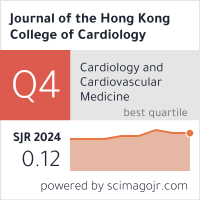Abstract
Aims: This study was conducted to assess the relationship of simple hematological parameters with the incidence of left atrial thrombus in rheumatic mitral stenosis in addition to conventional contributing factors. Methods: A cross-sectional analytical study was conducted in patients with significant rheumatic stenosis from 1 January 2018 to 31 July 2021. Thrombus evaluation was confirmed by transthoracic or transesophageal echocardiography. Lab tests were performed within 10 days prior to the echocardiographic evaluation. Subjects with significant mitral regurgitation will be excluded. Logistic regression analysis was done to evaluate the relationship between each variable to the presence of a thrombus. Results: Of the 318 subjects with significant rheumatic mitral stenosis included in the study, 102 patients (32%) had a thrombus in the left atrium. Of all the patients, it was known that subjects with atrial fibrillation rhythm as much as 63.8% and sinus rhythm 36.2%. Atrial fibrillation rhythm (OR 2.39; 95% CI 1.10-5.20, p = 0.028), left ventricular ejection fraction ≥56.68 % (OR 0.42; 95% CI 0.23 - 0.77, p = 0.005), TAPSE ≥18.10 mm (OR 0.44; 95% CI 0.230 - 0.83, p = 0.011), and hematocrit ≥45.15% (OR 2.98; 95% CI 1.27 - 6.98, p = 0.012) are associated with left atrial thrombus. Conclusion: Increased hematocrit was significantly associated with the incidence of left atrial thrombus, which may have contributed to the statis and hypercoagulable state component of the Virchow’s triad.
Recommended Citation
Bayushi Eka Putra, Rina Ariani, Anwar Santoso, Prima Almazini, Estu Rudiktyo, Amiliana Mardiani Soesanto, The Telltale of Left Atrial Thrombus Formation in Mitral Stenosis: Revisiting the Virchow’s Triad Journal of the Hong Kong College of Cardiology 2023;30(5) https://doi.org/10.55503/2790-6744.1514
Creative Commons License

This work is licensed under a Creative Commons Attribution-Noncommercial-No Derivative Works 4.0 License.
Included in
Analytical, Diagnostic and Therapeutic Techniques and Equipment Commons, Cardiovascular Diseases Commons, Medical Physiology Commons



